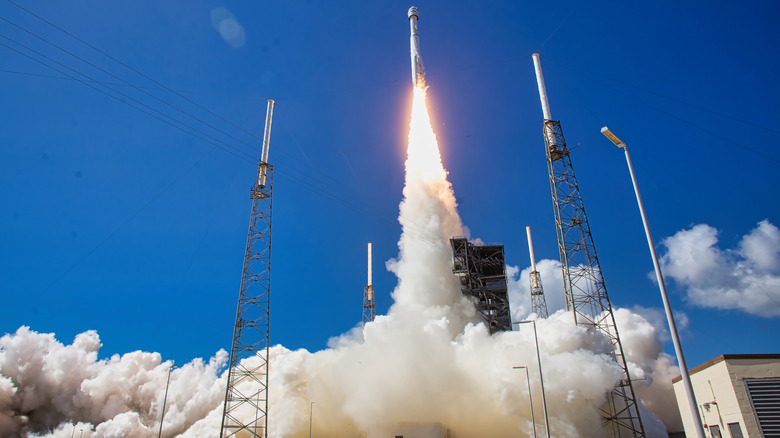How Does An Anti-Satellite Missile Work? (And Can A Fighter Jet Launch It?)
As of May 2023, the Union of Concerned Scientists listed 7,560 active satellites in orbit around Earth, while Space Watch Global put the number at over 10,000. In either case, this is a lot of hardware flying around the planet. For militaries around the world, satellites are a double-edged sword. On the one hand, they can monitor enemy locations, guide troops and missiles to targets, and allow instant communication from anywhere on the globe. On the other hand, it also offers these benefits to unfriendly nations.
Given that, it's probably no surprise to learn that, as soon as the Soviet Union launched Sputnik in 1957, military strategists began looking at how to destroy them. Anti-satellite Missiles (ASATs) are one of the products of this arms race. As the name suggests, these weapons are specifically designed to target and destroy satellites. An example of this type of munition is the Vought ASM-135 ASAT. This is the only U.S. air-launched satellite ever to have carried out the role it was designed for, namely to destroy an orbiting satellite.
In this instance, the missile was launched from an F-15A fighter and scored a direct hit on the orbiting craft. The missile didn't carry an explosive warhead; rather, it was a kinetic energy (KE-ASAT) or hit-to-kill weapon that relied on contact to destroy its target. Let's look at how the U.S. achieved this feat and how ASAT technology continues to evolve.
How does an ASAT work?
For six years after its launch on February 24, 1979, the Space Test Program satellite P78-1 had orbited the Earth at a height of 345 miles. However, on September 13, 1985, its journey came to a spectacular and sudden halt when an ASM-135 ASAT missile barrelled into the one-ton satellite at 15,000 mph, rather spoiling its day. The missile in question was launched from the already legendary F-15A fighter jet from a height of exactly 38,100 feet. That height and the missile's release angle were essential to the mission's success. That was because the business end of the ASAT — known as a miniature homing vehicle (MHV) — had limited maneuverability and more or less had to be pointed at the target.
Once released from the fighter jet, the missile soared out of the Earth's atmosphere, powered by two solid-rocket stages. After separating from the missile, the MHV used an infrared seeker for target tracking and 64 small rockets for steering. It also used a spinning motion to keep it stable. The infrared seeking system had to be kept incredibly cold for it to function; to achieve this, it used liquid helium at about -450 degrees Fahrenheit. Ultimately, the mission was a success, and the F15A pilot — Major Wilbert D. Pearson Jr. — became the first ever pilot to shoot down an orbiting satellite. Despite this success, the program was cancelled in 1988, with a mixture of arms control politics, technical issues, and spiralling costs conspiring to end the program.
The evolution of anti-satellite weapons
The ASM-135 weapon is classified as KE-ASAT. However, it's not the only example of a KE-ASAT, and not all need to be launched from high-flying fighter jets. Co-orbital ASATs were another early type of anti-satellite weapon. These work by syncing their orbit with a target satellite and detonating an explosive warhead when close enough — useful given the high speeds satellites travel at. It was the Soviet Union's development of this weapon that prompted the US to develop the ASM-135. China has also entered the race and used a KE-ASAT weapon to destroy one of its satellites in January 2007.
A more recent Russian development is a system known as Nudol, which can move between paths to increase the number of satellites it can target. A road-launched version of this system is believed to be behind the destruction of the Kosmos-1408 satellite in November 2021. However, while all the above can be defined as KE-ASATs, there is also another category to consider. Non-kinetic ASATs include the use of cyberattacks, jamming, or even lasers to blind or otherwise incapacitate satellites. As our reliance on satellites increases, so does the pressure to protect or disable them. Let's hope that we don't turn all our important satellites into billions of pieces of useless space junk.


